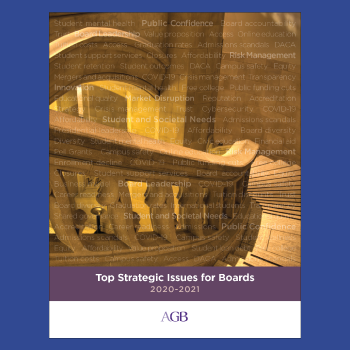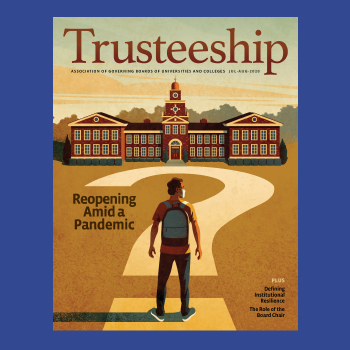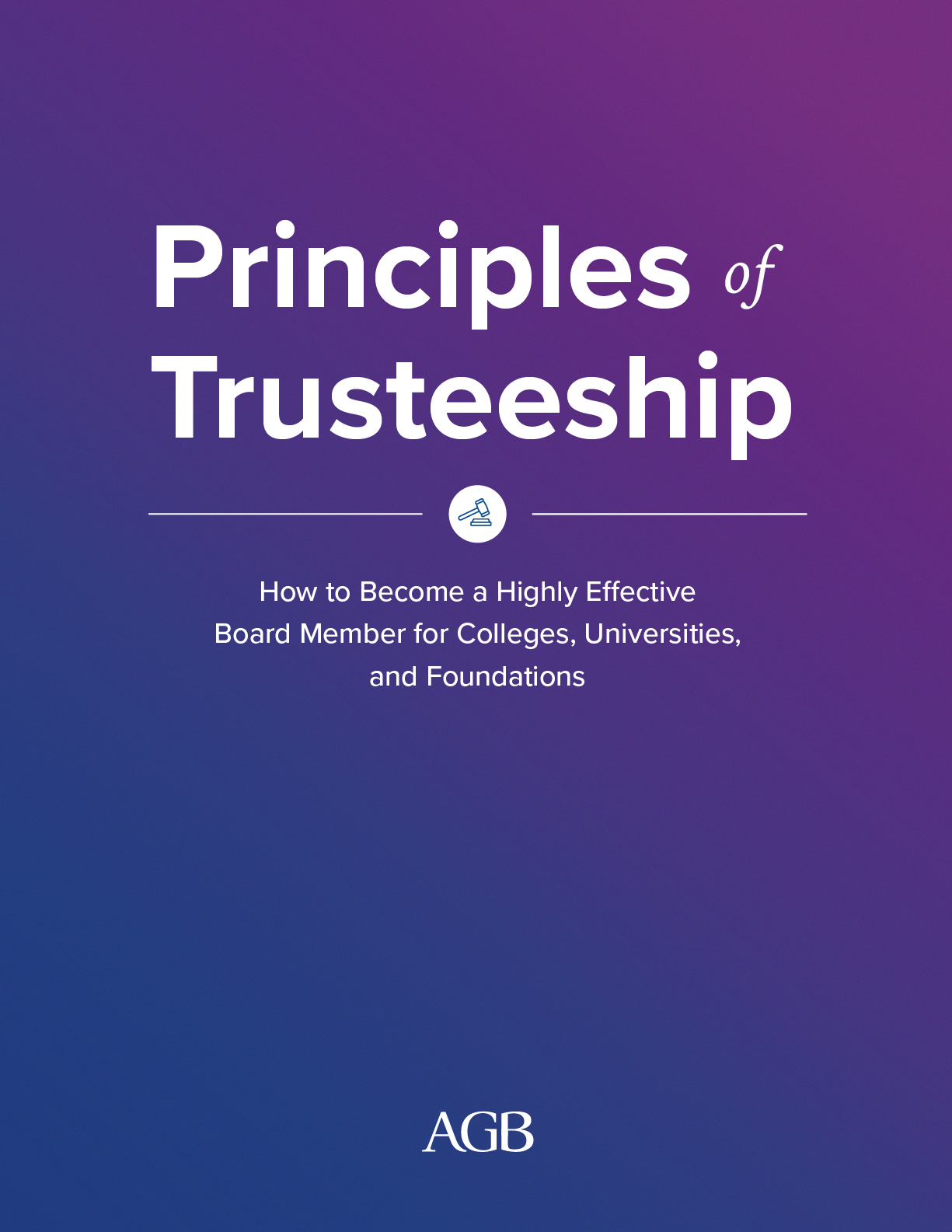Principle 7:
Learn about the mission, constituents, culture, and context.
Principle 7 supports the fundamental function of thinking strategically by committing to continued learning, improvement, and accountability. To engage in higher learning, you must:
- Shape your institution’s vision and strategy based on its unique purpose and constituents. Let the characteristics of your student body, your faculty, and your community shape your thinking about the challenges and opportunities facing your college or university.
- Understand the present state of the enterprise and focus on its future needs. Stay informed about trends and developments at your institution and in higher education, such as changing student demographics, novel teaching pedagogies and advances in instructional technology, community employment needs, and increased funding for research or scholarships.
- Become a student of higher education. Develop an awareness, appreciation, and working knowledge of its unique characteristics, such as student success, academic freedom, and shared governance.
“We all know that higher education is going to change in the next five years.
How we serve— and what our mission is—is going to be vitally important.”
—Trustee, Private College
Questions for self-reflection.
- How is serving on the board similar to your professional experience? What do you need to do differently as a board member from what you do “at the office”?
- How is higher education different from your industry? What will help you adapt your expertise and experience to this context? What issues and areas are new to you?
- How has higher education changed since you were a student? How has your institution changed in the past 10 years? How might it change in the next 10 years?
- What is the value of a degree from your institution? What does success look like for students at your institution? What other metrics of institutional success does the board monitor?
- Do you have adequate information needed to be a productive board member? What would help you better understand the issues, our circumstances, and/or the alternatives? Who is your primary contact for additional information?
This guide conveys the essence of highly effective trusteeship in a concise, easy-to-use format. It defines the attitudes and actions of highly effective board members, and provides insight into three fundamental functions:
- Understand governance by embracing all of your responsibilities in a structure of shared leadership.
- Lead by example by upholding the highest standards of integrity.
- Think strategically by focusing on what matters most to the long-term success of the whole enterprise.








